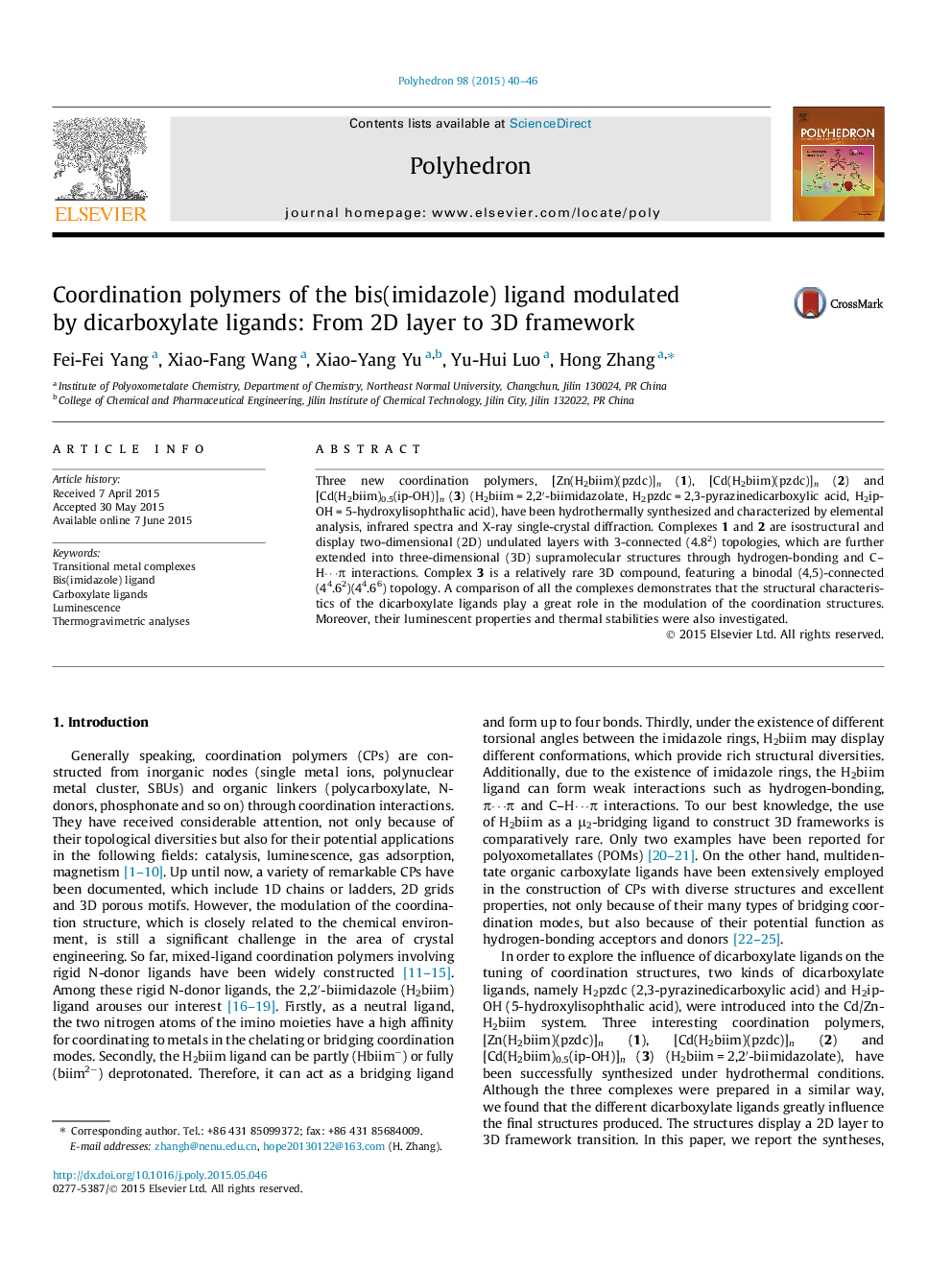| Article ID | Journal | Published Year | Pages | File Type |
|---|---|---|---|---|
| 1334340 | Polyhedron | 2015 | 7 Pages |
•1 and 2 are isostructural, displaying an intriguing 2D 3-connected (4.82) layer with two kinds of rings.•Interestingly, there exist four types of ring in 3.•3 is a relatively rare 3D compound constructed by μ2-bridging H2biim ligands and organic dicarboxylate ligands.•Dicarboxylate ligands play a great role in the modulation of coordination structures.
Three new coordination polymers, [Zn(H2biim)(pzdc)]n (1), [Cd(H2biim)(pzdc)]n (2) and [Cd(H2biim)0.5(ip-OH)]n (3) (H2biim = 2,2′-biimidazolate, H2pzdc = 2,3-pyrazinedicarboxylic acid, H2ip-OH = 5-hydroxylisophthalic acid), have been hydrothermally synthesized and characterized by elemental analysis, infrared spectra and X-ray single-crystal diffraction. Complexes 1 and 2 are isostructural and display two-dimensional (2D) undulated layers with 3-connected (4.82) topologies, which are further extended into three-dimensional (3D) supramolecular structures through hydrogen-bonding and C–H⋯π interactions. Complex 3 is a relatively rare 3D compound, featuring a binodal (4,5)-connected (44.62)(44.66) topology. A comparison of all the complexes demonstrates that the structural characteristics of the dicarboxylate ligands play a great role in the modulation of the coordination structures. Moreover, their luminescent properties and thermal stabilities were also investigated.
Graphical abstractThree Cd(II) or Zn(II) compounds have been synthesized. Complexes 1 and 2 are isostructural and display two-dimensional (2D) undulated layers with 3-connected (4.82) topologies. Complex 3 is a comparatively rare 3D compound, featuring a binodal (4,5)-connected (44.62)(44.66) topology.Figure optionsDownload full-size imageDownload as PowerPoint slide
